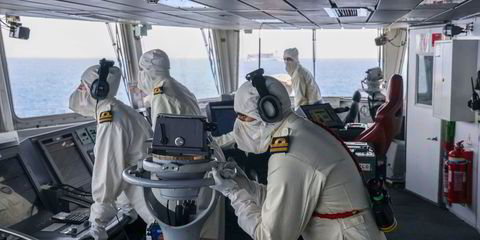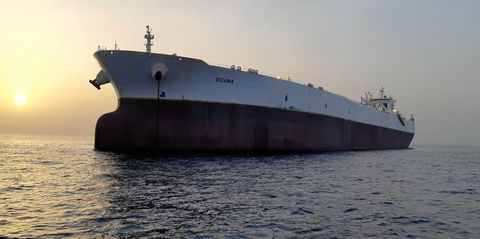Start-ups innovating maritime solutions often have great ideas but securing funding amid intense competition to turn them into saleable products is one of their biggest challenges.
Investors typically seek ventures with a proven track record or a clear profitability path, which many start-ups lack.
And maritime tech start-ups face specific funding challenges due to a perception among investors that the industry is resistant to rapid technological change and the risk of limited adoption.
Bucking that trend is Motion Ventures, a Singapore-based consortium-driven venture capital fund launched in 2021 that targets maritime-related start-ups.
The fund is a typical example of how Singapore’s maritime ecosystem has banded together to remove roadblocks to the innovation required to meet the International Maritime Organization’s 2030 and 2050 emissions requirements.
Anchor investors comprise Wilhelmsen, Lloyd’s Register, Hamburger Hafen und Logistik and Indonesian shipowner Meratus.
Other corporate shipping investors include Kepler, Mitsui OSK Lines, IMC, Stolt-Nielsen and Signal Maritime, together with partners from the financial and government sectors.
“It speaks to the strength of the network. People see value in it,” said Motion Ventures founder Shaun Hon, a former engineer who used to build predictive models for an electric vehicle company before moving to Singapore six years ago.
“One of the things I discovered was that for founders in the B2B space, sales cycles are traditionally very long. I was thinking about what the best way would be to solve that.
‘Market fit’
“Our hypothesis is that if we can line up the right industry stakeholders together to work in alignment on a solution, the start-up founders get better feedback on whether their solution works. That shortens a lot of the time needed to find product market fit,” Hon said.
“We decided we wanted a fund that would encompass maritime plays across the value chain, to have a different lens on what is a solution that can be adopted in the industry, as opposed to any siloed views.”
Commenting from the perspective of a corporate investor in Motion Ventures, Nakul Malhotra, vice president of Wilhelmsen Group’s emerging opportunities portfolio, said the fund is a very good forum for maritime corporates to collaborate with others in the industry based on an aligned principle.
“A corporate venture-capital approach is one important cog in that overall thing where we essentially utilise the fund’s deal-flow scanning and venture scouting to see what’s happening in the market.
“All of that insight and intelligence gives us a sense of what direction things are moving,” Malhotra said.
Seed-stage companies
Motion Ventures targets seed-stage companies — start-ups that have a product and might be doing trials or have one or two clients.
“That is a really good spot for us to come in because they have a tangible product,” Hon said.
Motion Ventures spends a lot of time trying to find the right businesses to invest in, Hon said. It also gets reach-outs and referrals from its investors.
After identifying a suitable candidate, the team then runs the start-up’s solution past its investors, who could be potential users and seeks feedback from the market.
“If it didn’t work, or something isn’t working right, we share that feedback with the founders so that they can decide if they want to iterate the product to better fit the market needs,” Hon said.
“Then we start looking into other stuff. Do they enable the industry to do better? Is there a real need? How big is the market? Is it a growing space? Do the founders have execution capabilities?”
The global search for candidates has seen the fund review more than 8,000 potential companies over the past three years.
“We mostly spent a lot of time on evaluation and due diligence,” Hon said.
To date, the fund has invested in 25 companies.
Most investments are in the region of $500,000. Exceptional performers can receive capital injections of up to $2m.
Both Hon and Malhotra stress that, like any other fund, Motion Ventures will at some point liquidate its investments and return capital to investors.
The fund has already had two profitable exits from portfolio investments.
$22m war chest
“To be able to see that life cycle happen with two of the portfolio within that time period just gives some level of validation of the concept,” Malhotra said.
Motion Ventures started off with a SGD 30m ($22.2m) war chest and has invested about 75% so far.
Hon does not believe Motion Ventures’ mission will change.
“Since we started, we’ve been trying to bring more innovation into the maritime space and see adoption growing,” he said.
“We are figuring out how to scale that, to grow the network and offer different kinds of support for our start-up founders to build more consistently, more reliably.
“We’ll keep doing that in many different forms. Venture funding is certainly one way we’ve done it. But we’re also not opposed to other ways that might work better.
“If we look at the spectrum of companies that are being built, there are so many different kinds of companies that require different kinds of funding. I think these are all different opportunities that we can capitalise on and build more in this space.”




